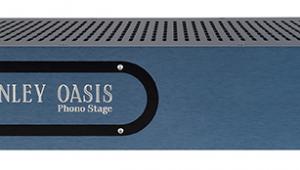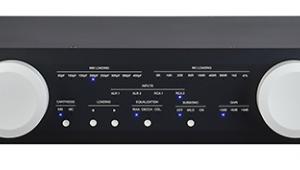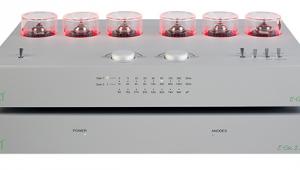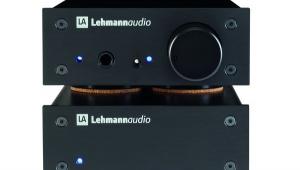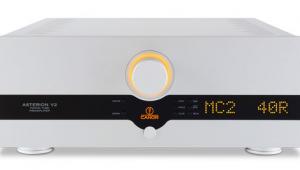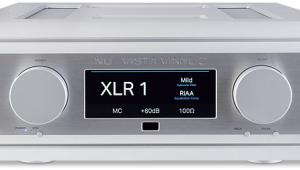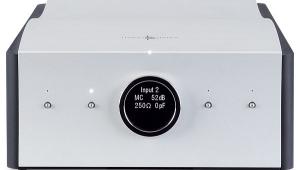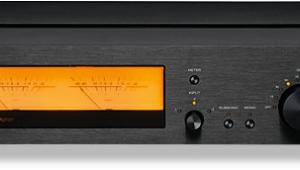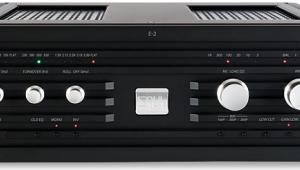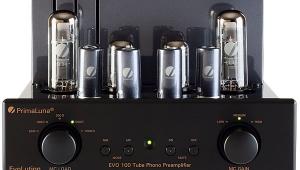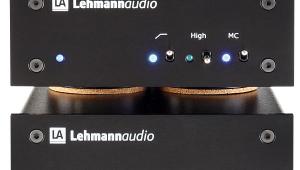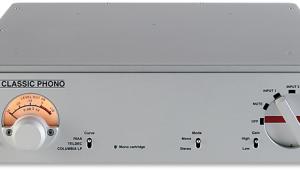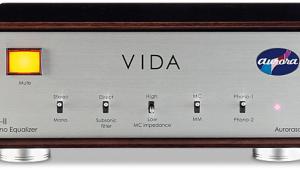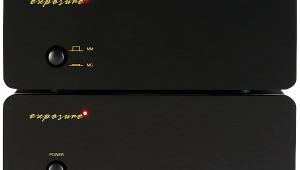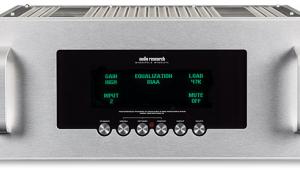Icon Audio Ps3 (£1699)
For the Leicester-based company Icon Audio, the PS3 is a development prompted by its successful PS1 phono stage, now in MkII form. Both feature – as do its MP3 Mini Amp and HP8 headphone amp – the distinctive ‘peephole’ through which its complement of tubes may be glimpsed.
For the PS3 phono stage, designer David Shaw has specified no fewer than seven triode valves including ECC88s and one 6SN7 for the output. The separate power supply unit has another six (EZ80, ECC83 and 5687 types) used for voltage rectification and regulation. Underneath, the components are all wired point-to-point, avoiding the use of printed circuit boards.
On the front panel of the PS3 itself one rotary control is for volume and the other switches from MM to MC. Shaw personally prefers moving-coils, but you can buy the PS3 as an MM-only unit at £1299 – ours came fitted with the transformers which provide MC sensitivity and add £200 to the price. Icon uses a high quality British custom wound toroidal transformer with mu-metal screening. Our sample also came with one of Icon’s special upgrade options, namely a set of Jensen capacitors, adding another £200 to bring the price to £1699 as quoted above.
Features include a mono/stereo switch and a ‘ground lift’ switch, used to minimise hum if the turntable wiring creates an unexpected ‘earth loop’.
SPACE AND LIFE
For our test we used Ortofon’s Cadenza Blue [see p22] and Koetsu Black moving-coils, and began with the Harry James direct cut The King James Version [Sheffield Lab LP]. The Icon gave a sound with space and life in it, the positioning of instruments heard clearly. James’ solo trumpet sound had a convincing bite to it, but it had plenty of body too.
Eric Clapton’s ‘Motherless Children’, from 461 Ocean Boulevard [RSO], seemed to benefit from the Icon’s qualities of detail resolution and balance. You felt encouraged to listen into the mix, and at the bottom end, the bass guitar had weight and body so Carl Radle’s playing sounded deliberate without becoming sluggish.
On to Rickie Lee Jones [Warner] and the ‘Easy Money’ track, where the Icon presented the vocals with a real focus, revealing the subtle nuances of the singer’s delivery and her breathing.
Sir John Barbirolli’s EMI disc of English string music [ASD 521] had a smooth and flowing quality, with a pleasing overall balance and a naturalness to the string sounds. Less forward and punchy than the Lector or Unison valve phono preamplifiers used for comparison [for more, including a detailed Lab Report, see our July ’10 Group Test], the Icon provided a relaxing and unstrained picture of the music.
With the Koetsu Black in place of the Ortofon, the Icon still displayed a smooth unruffled character, with attractive instrumental timbres. Bass was weighty but not unduly heavy or uncontrolled in nature.
On moving-magnet (Roksan Corus Silver) the Icon gave a really well-balanced, inviting and musical sound, with fine midrange clarity and satisfying weight to the bass. It was delicious with Dire Straits’ ‘Sultans Of Swing’!
VERDICT
This robust-looking pairing is clearly aimed at the real valve enthusiast with its multiplicity of tubes. It offers low midrange distortion and respectable bass extension, catering for both moving-coil and moving-magnet cartridges (although as noted, there is a cheaper MM-only option). This was declared winner in our Group Test: ‘consistent, always very good, always musical, always inviting’. In fact a truly excellent all-rounder.
Sound Quality: 85%
Originally published in the July 2010 issue


